Robotic legs help paralysed Victorian man ‘walk’ again
A CRUSHED spine left this Victorian man unable to move from the chest down, but he’s standing on his own two feet thanks to technology which is giving him the chance to walk again.
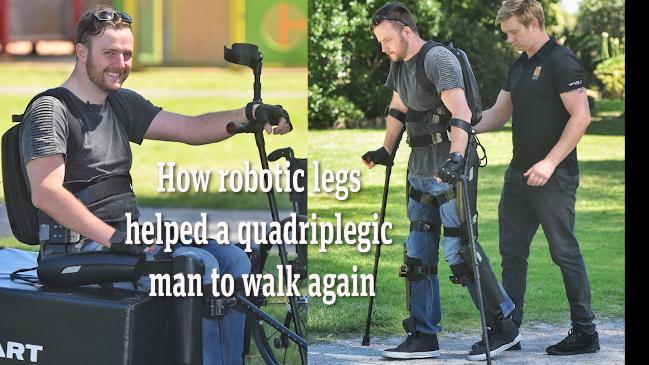
VIC News
Don't miss out on the headlines from VIC News. Followed categories will be added to My News.
OTHER than a 20-cent-sized scra​tch​ on his knee, Adam Woods seemed oddly intact after the crash.
In the seconds after the car careered towards him, his motorbike flew through the air.
The 170kg of metal, plastics and rubber ricocheted off the vehicle and landed on top of him.
Big sister Alexandria Mitchell, a former nurse, almost guessed her brother’s condition by the faces of the hospital staff.
“I had worked with spinal cord injury patients before so I just said: ‘tell it to me straight’.”
The 30-year-old was in a coma, his lungs collapsed and spine shattered at the sixth cervical vertebrae, just at the base of the neck.
SPINAL CORD INJURY VICTIMS LIVE IN HOPE
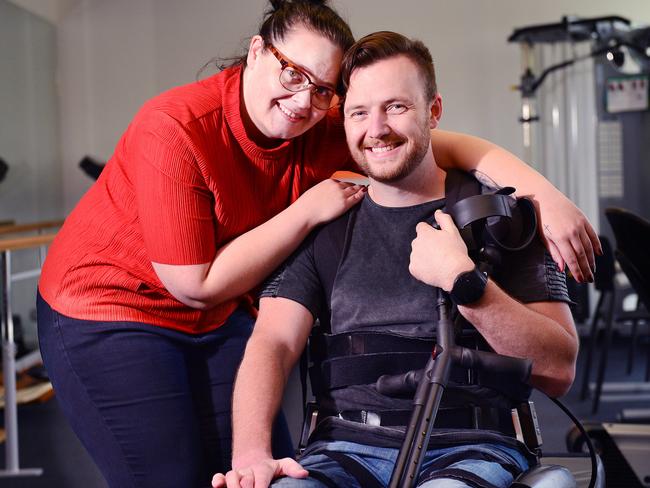
“I called mum, she was hysterical,” she recalls.
When the Victorian man woke up he discovered as a quadriplegic he would soon be getting around on an entirely different set of wheels.
But the pragmatic, charismatic ‘tech geek’, was always going to push the boundaries of what was possible.
Soon after his six months in hospital and rehabilitation, he was independently caring for himself in his Melbourne home.
While he saw others feeling trapped and overwhelmed by their new reality, he focused on what he had, not what he’d lost: supportive friends and family, a knowledge-based job to return to and his rehabilitation and disability services bill paid for by the TAC.
“It’s such a catastrophic event, but you have a choice,” he said.
“You can sit in a room and cry about it, draw your blinds and watch as everything falls to pieces.
“Or you can absolutely acknowledge your difficulties have moments where you cry and break down — and I’ve had my fair share of them — but your only real option is to get on with it.”
Despite the accident, which has permanently changed their lives, he has received unflinching support from his partner, Robin Thompson.
SONGWRITING HITS RIGHT NOTE FOR INJURED
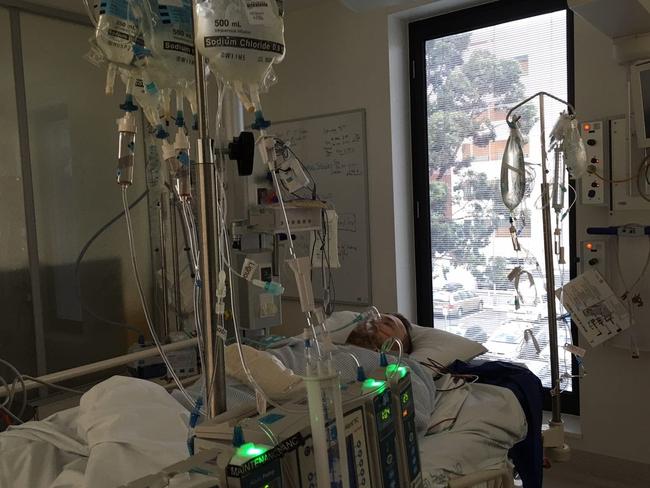
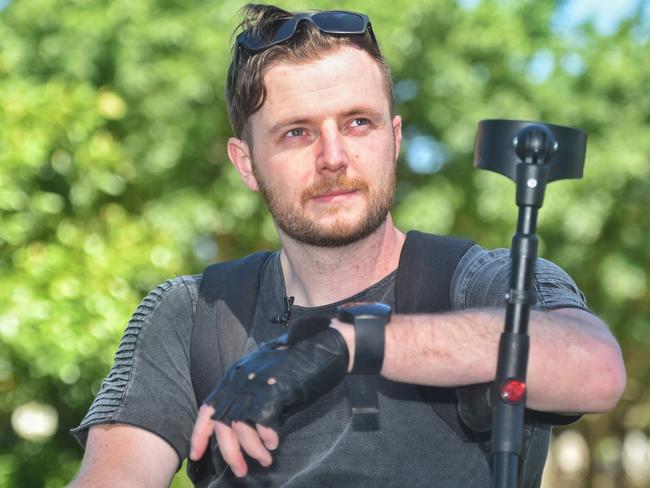
This attitude led him to where he is today: walking with assistance down a Hughsdale street in a battery-powered robotic exoskeleton.
While researching rehabilitation technology online, he discovered the ReWalk device and contacted its Australian distributor Making Strides.
Director of ReWalk Australia Jim Barrett said there were nine devices used in Australia in people with spinal cord injury: four in a rehabilitation setting and five in people’s own homes.
There’s the gentlemen who cherishes a morning walk with his wife and dog, a student who walked onto stage to get his degree and the teenager in remote Australia who can now access home rehabilitation.
Mr Woods, an instructional designer who creates and delivers corporate training programs, yearns to ‘stand and deliver’ in the workplace.
“I don’t care what you say, if you are sitting down people don’t listen to you in the same way,” he said.
“Standing up commands makes you more influential.”
He also jokes about being able to order a drink at the pub and look the bartender in the eye again.
“I liked being six foot one again,” Mr Woods said grinning as he describes how it felt the first time he used the device.

He slides out of his wheelchair and into the skeleton’s brace.
With the press of a button on a wristwatch, he moves from sitting, to standing.
He presses another button to put the robotic legs in walking mode.
And, he’s off.
A strange robotic screech coming from the machine as it moves his legs and there’s a clicking from his crutches as he balances his body.
“It’s way harder work than it seems,” Mr Woods said.
“All you have got are your shoulders and your chest to keep yourself upright.”
His physiotherapist Colbey Van Leeuwen from Steps Neurological Therapy Services, describes it like having your entire body wrapped in duct tape from the chest down.
“Your arms are essentially forming the role of your legs in keeping your balance and you have to figure out where to put them to stay upright.”
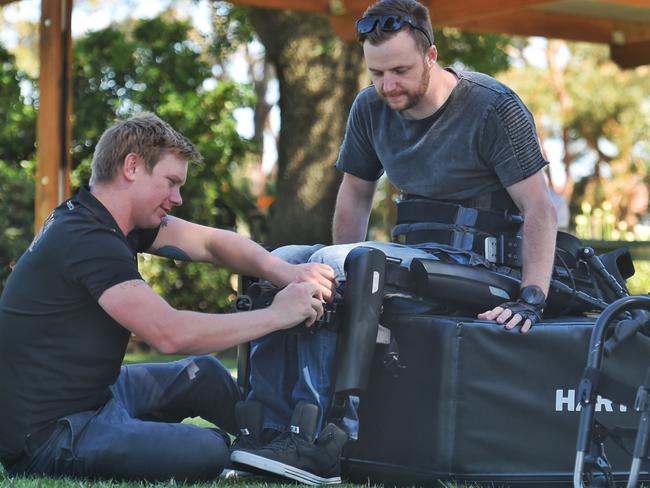
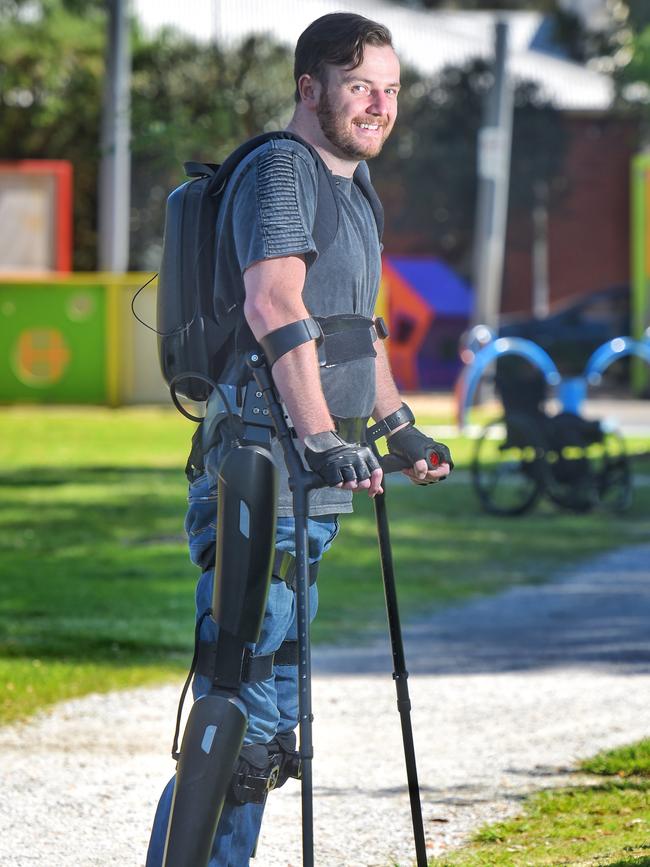

Aside from the psychosocial benefits of being able to experience standing and ‘walking’, users believe it helps with some physical health issues that arise in people with quadriplegia.
Mr Woods has experienced a reduction in neuropathic pain, where the communication system between the damaged nerves and the brain are confused leaving the sufferer feeling like they have “third degree sunburn”.
Others believe it could help reduce muscle spasms, build muscle tone, preserve bone density and improve bladder and bowel function.
For Mr Woods, whose trial of the $150,000 device was funded through the TAC, it’s been a rewarding experience.
While he’s not yet ready to take the device to the boardroom or the bar, he believes the technology is the first small step towards greater independence and functionality for people with spinal cord injuries.


